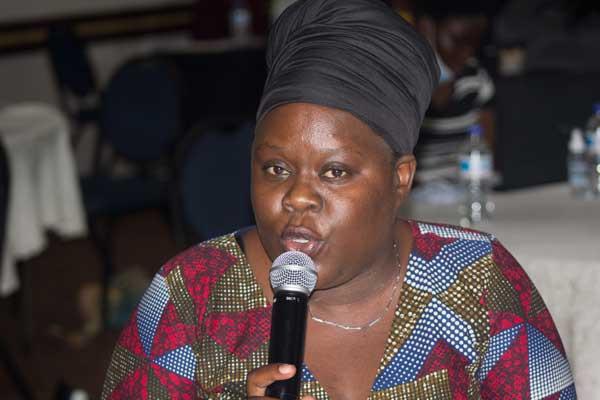HARARE – LEAD President Linda Tsungirirai Masarira has sharply criticized the recent findings by the Standards Association of Zimbabwe (SAZ), which stated that maize meal products tested contain glyphosate levels well below harmful limits.
Masarira argues that any presence of glyphosate, a known carcinogen, poses a serious threat to public health, citing studies that link long-term, low-dose exposure to potential health risks, including cancer. She has called for stricter regulations and a complete ban on the chemical in food products.
Speaking on Tuesday, Masarira expressed concern over what she termed “misleading” assurances from SAZ and the Grain Millers Association of Zimbabwe (GMAZ) that the detected glyphosate levels were safe for consumption.
“Glyphosate, a known carcinogen, has been linked to cancer and other serious health issues. The very presence of this herbicide, no matter the quantity, poses a significant risk to public health,” she said, adding that repeated exposure to even small amounts of the herbicide could lead to serious long-term health issues.
Her comments come in response to the SAZ’s findings that mealie-meal brands, including Ngwerewere Super refined meal, Red Seal Super roller meal, Sunrise Super Roller meal, Mega Roller meal, Pearlenta and Chibataura Roller meal, tested for glyphosate levels below 0.5 parts per million (ppm), which the organization claims is within safe limits.
However, Masarira criticized the results as misleading and called for a total ban on the chemical in foodstuffs, pointing out the long-term health risks associated with continuous exposure to even trace amounts of glyphosate.
SAZ Technical Services Director Danmore Mabambe had earlier assured the public that all the tested maize meal samples met national and international standards, adding that the detected levels of glyphosate were far below the maximum residue limits set in Zimbabwe, which allow up to 0.5 ppm.
“In all the analyzed samples, the levels of glyphosate were below 0.5 parts per million (ppm) which is the Limit of Detection for the method of test. This means that the detected levels are below the maximum residue limits and the analyzed mealie meal samples are safe for consumption,” he said.
Activist Rutendo Matinyarare, whose claims of harmful levels of glyphosate in maize meal triggered the debate, reiterated his long standing criticism of glyphosate’s presence in Zimbabwe’s food chain, appearing to suggest that the health of Zimbabweans is being compromised for the sake of convenience and profit.
He pointed out that current residue limits used by SAZ date back to 2006 and no longer align with international standards set by the Codex Alimentarius Commission in 2022. “The manufacturer of glyphosate itself warns against any contamination of food or water. So why are we accepting even small traces in our food?” Matinyarare wrote on social media.
“..no poison (rat poison) can ever be taken in small doses without causing a problem. So this logic that glyphosate can be taken in small doses is madness. This is why the manufacturer of the product has clearly instructed that glyphosate must not contaminate food and water. The manufacturer does not say small traces are acceptable,” he added.
The debate over glyphosate has reignited concerns about food safety in Zimbabwe, where cancer rates are alarmingly high.
Masarira warned that allowing the chemical to persist in food products could worsen the country’s public health crisis.
“The assertion by SAZ that the detected levels are ‘not harmful’ is a gross misrepresentation of scientific research, which has shown that continuous exposure to glyphosate, even in trace amounts, can lead to long-term health problems,” she said.
“…We demand stricter enforcement of food safety laws, comprehensive testing across all food and beverage industries, and swift action to protect the public from exposure to dangerous substances like glyphosate. Anything less is a failure to protect the people of Zimbabwe from potential harm.”
Although regulatory bodies such as the EPA and the European Food Safety Authority (EFSA) assert that glyphosate is safe when residue levels fall within the maximum residue limits (MRLs), numerous environmental and health advocacy organizations contest the presence of glyphosate in food altogether.
They reference research indicating that long-term, low-dose exposure could lead to serious health risks, including cancer. This ongoing debate has prompted some countries and regions to reevaluate glyphosate usage and impose stricter regulations in response to public demand.
Kukurigo Updates











